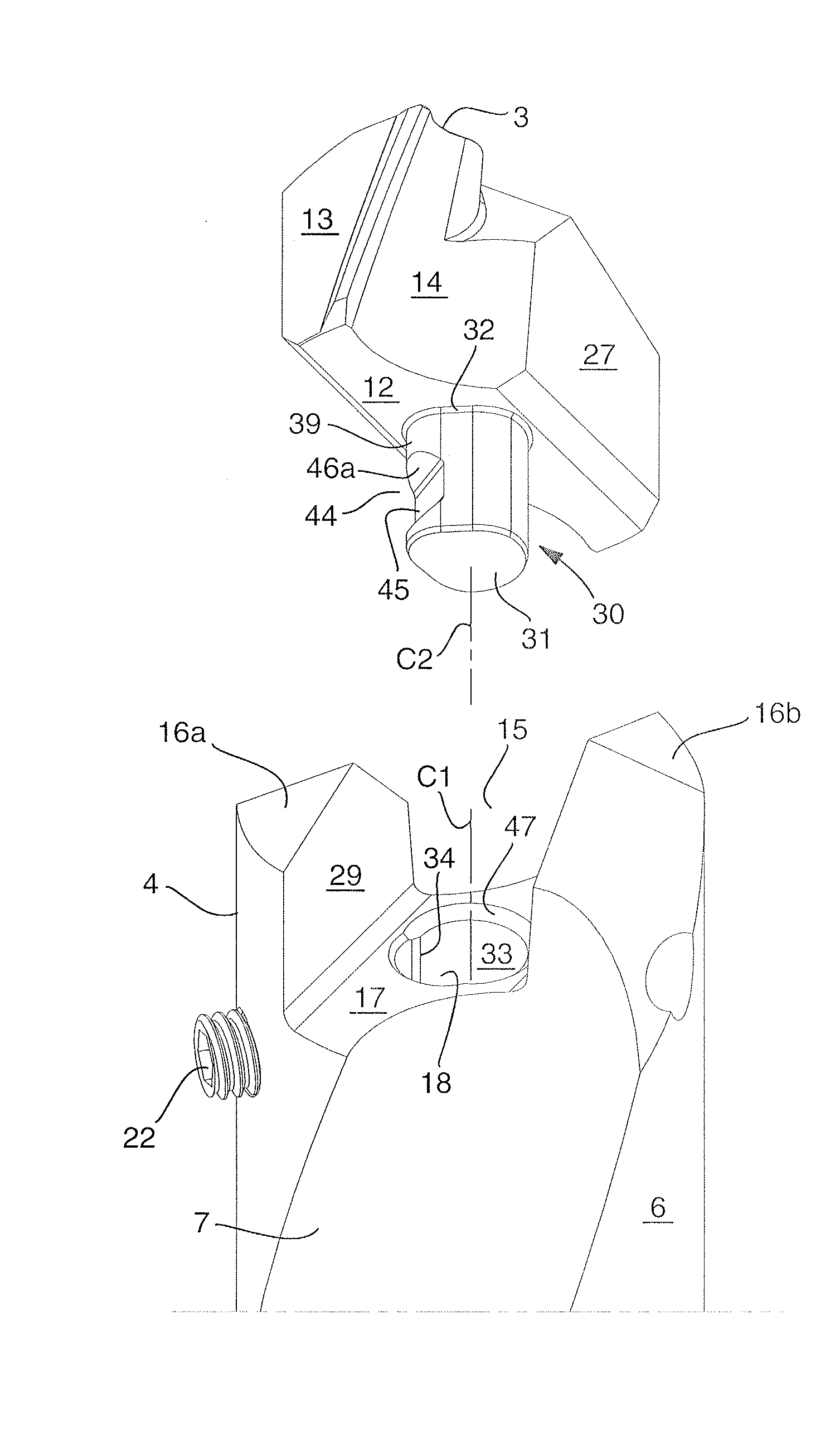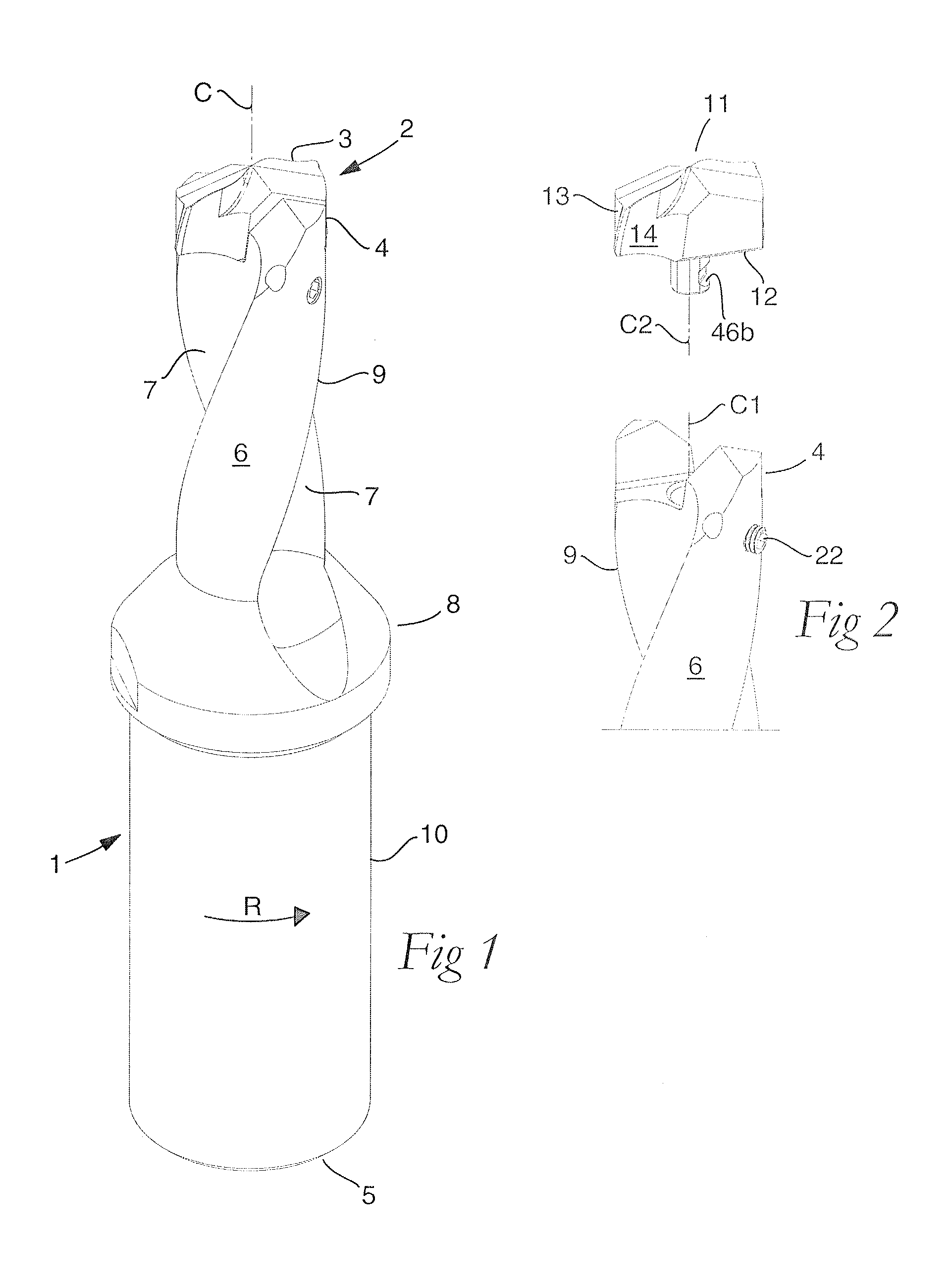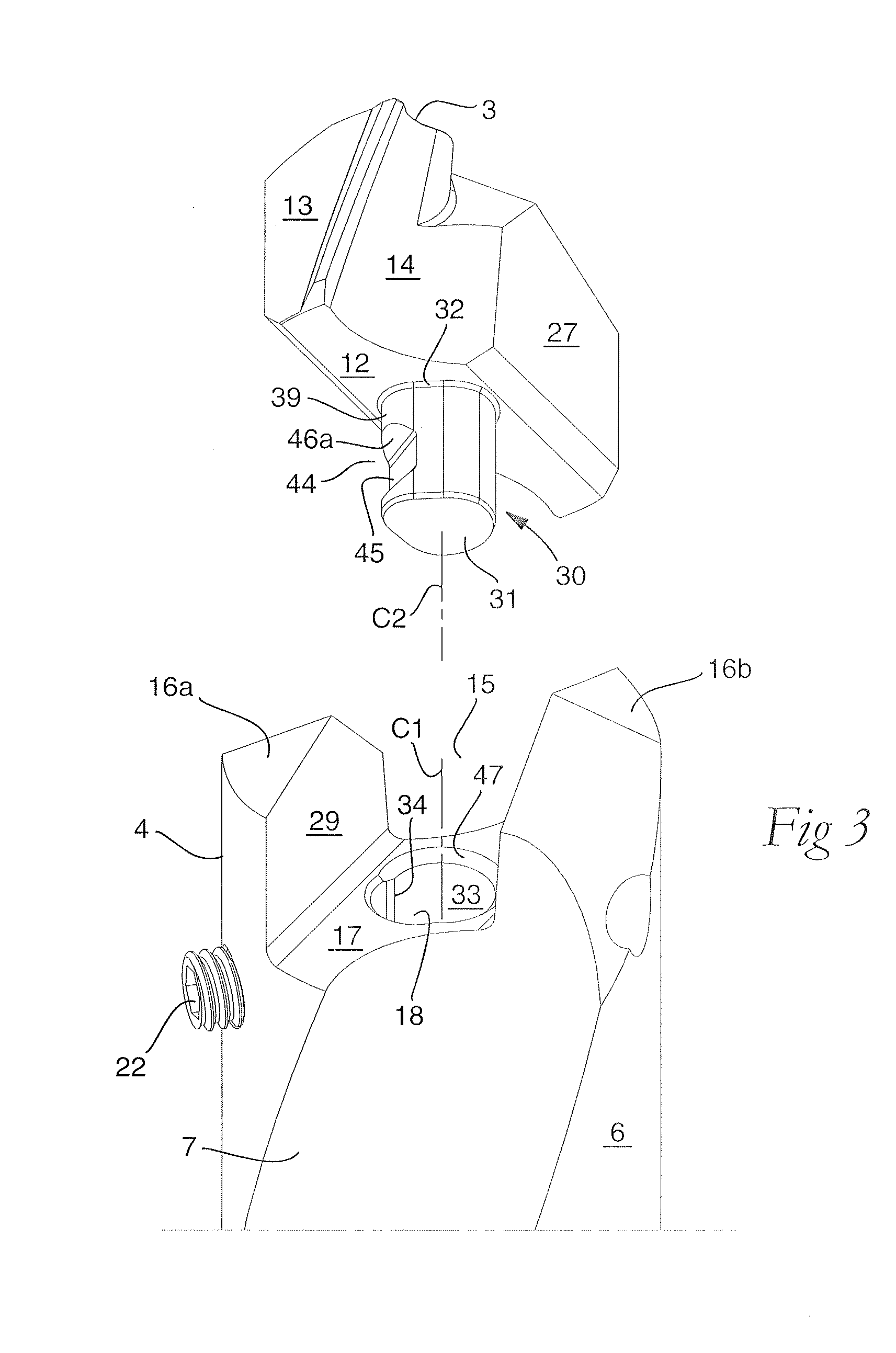Rotatable tool for chip removing machining as well as a loose top and a basic body therefor
a technology of rotating tools and loose tops, which is applied in the direction of shaping cutters, manufacturing tools, twist drills, etc., can solve the problems of extreme, not to say unattainable, and the risk of incorrect mounting of loose tops is 50%, and achieves strong and robust effects
- Summary
- Abstract
- Description
- Claims
- Application Information
AI Technical Summary
Benefits of technology
Problems solved by technology
Method used
Image
Examples
Embodiment Construction
[0027]In the drawings, the loose top tool according to an embodiment of the invention is exemplified in the form of a twist drill, which includes a basic body 1 and a loose top 2, in which the requisite cutting edges 3 are included. In its assembled, operative state according to FIG. 1, the tool is rotatable around a geometrical center axis designated C, more precisely in the direction of rotation R. The basic body 1 includes front and rear ends 4, 5 between which a center axis C1 specific to the basic body extends. In the backward direction from the front end 4, a cylindrical or rotationally symmetrical envelope surface 6 extends, in which two chip flutes 7 are countersunk, which in this case are helicoidal but which also may be straight. In the example, the chip flutes 7 terminate in a collar 8, separating the front part 9 of the basic body from a rear part 10, which has a diameter that is greater than that of the part 9, and is intended to be attached to a driving machine (not sh...
PUM
| Property | Measurement | Unit |
|---|---|---|
| Fraction | aaaaa | aaaaa |
| Angle | aaaaa | aaaaa |
| Angle | aaaaa | aaaaa |
Abstract
Description
Claims
Application Information
 Login to View More
Login to View More - R&D
- Intellectual Property
- Life Sciences
- Materials
- Tech Scout
- Unparalleled Data Quality
- Higher Quality Content
- 60% Fewer Hallucinations
Browse by: Latest US Patents, China's latest patents, Technical Efficacy Thesaurus, Application Domain, Technology Topic, Popular Technical Reports.
© 2025 PatSnap. All rights reserved.Legal|Privacy policy|Modern Slavery Act Transparency Statement|Sitemap|About US| Contact US: help@patsnap.com



